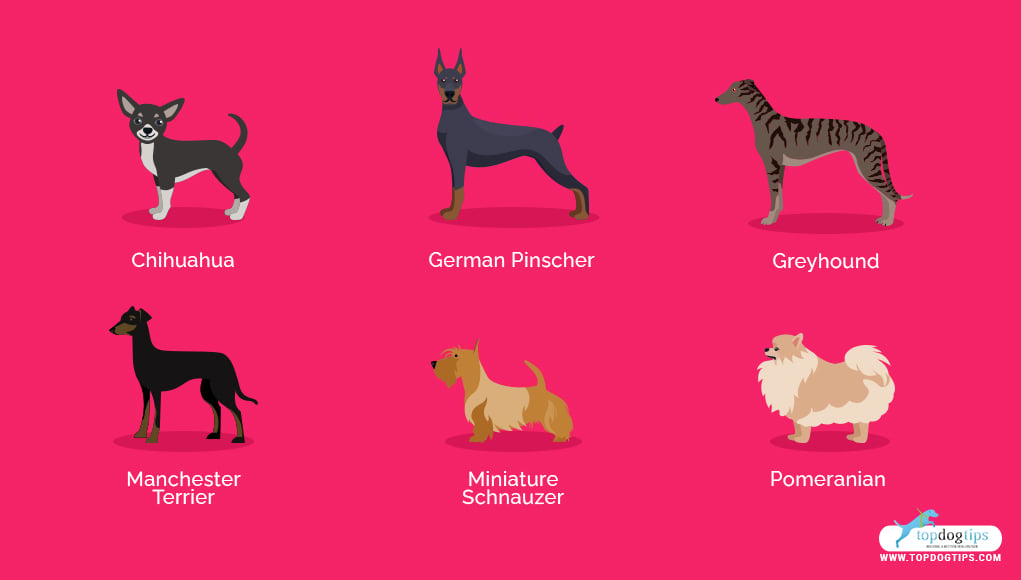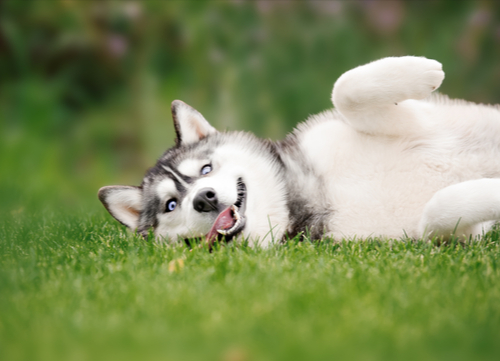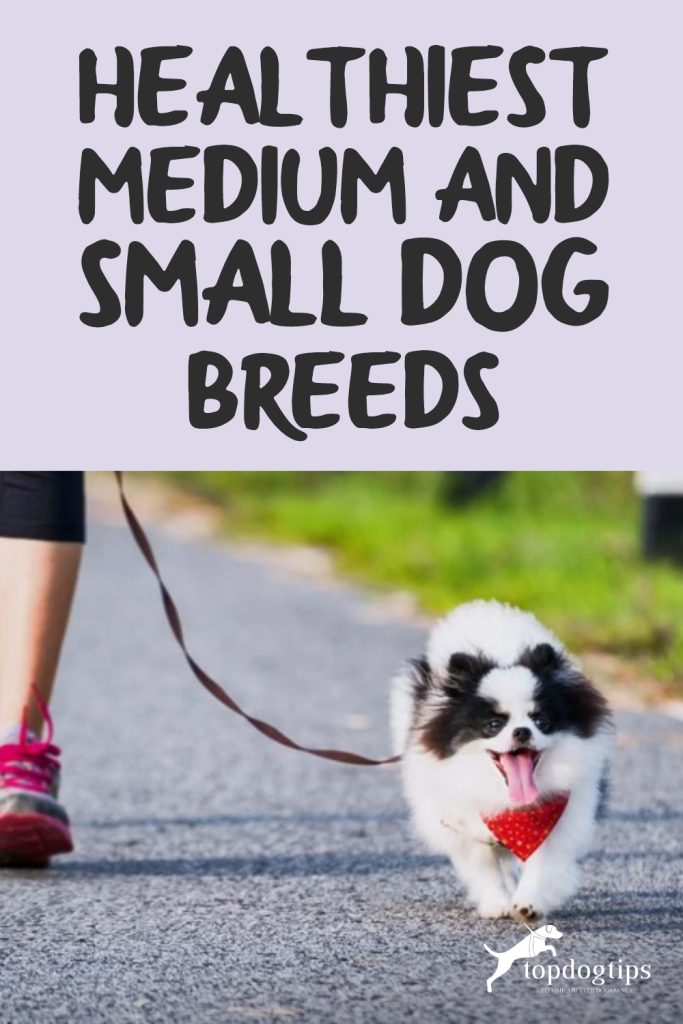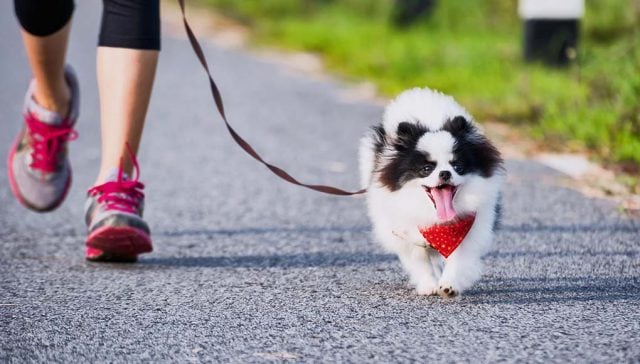
Table of Contents
Dogs are perhaps the best animal companions humans have ever known. Who wouldn’t want such a special friend to live with us longer?
Some breeds do seem to live longer, healthier lives with fewer congenital diseases to worry about. The seventeen breeds listed below are among the healthiest, and they do share some common factors.
Whether they are small dogs or working dogs, they all have high energy levels, and releasing that energy in exercise helps them stay healthier for longer.
Of course, there’s no guarantee that an individual dog, of whatever breed, won’t develop health problems within their lifetimes, but these breeds tend to be both healthy and long-lived.
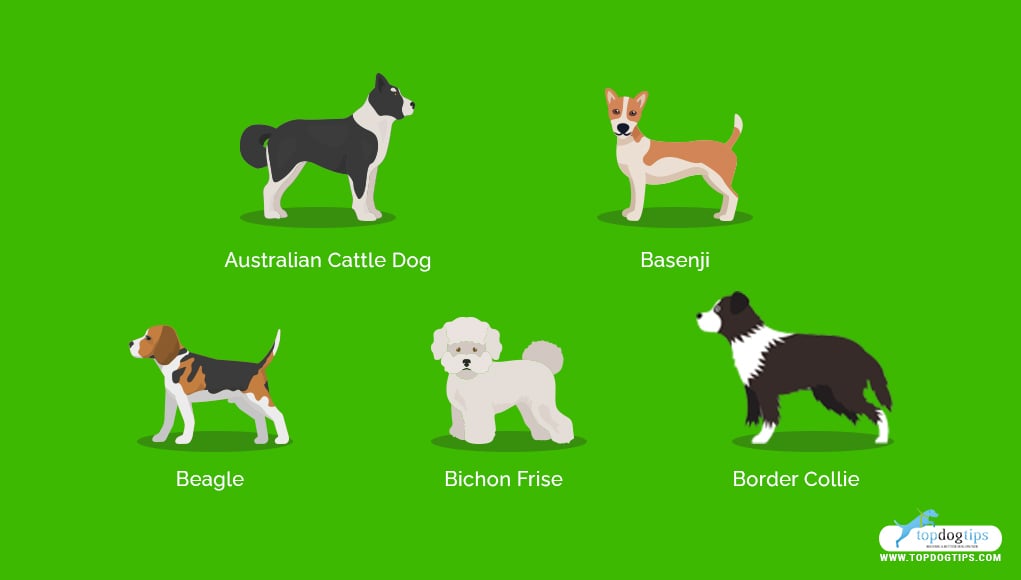
The 17 Healthiest Small to Medium Dog Breeds
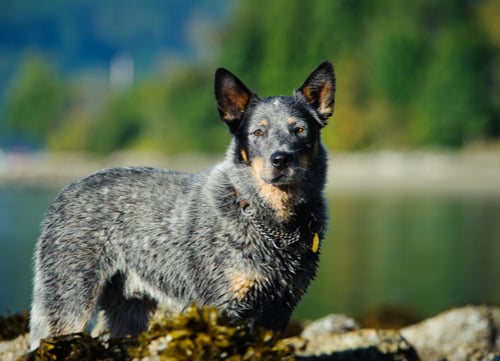
1. Australian Cattle Dog
As Australian cattle ranchers moved into the country’s hot, dry interior, they needed to find a herding dog that could handle those harsh, punishing conditions.
Their solution was to crossbreed imported from England with wild dingos and other breeds in Australia. The result was the athletic, tireless Australia Cattle Dog.
On average, the breed lives between 12 to 16 years, but one Australian Cattle Dog named Bluey lived for 29 years, according to the Guinness World Records.
Running every day with their people is a great exercise for them. They also excel in dog sports like obedience and agility.
Australian Cattle Dogs also make great walking or hiking companions—if you can keep up with them!
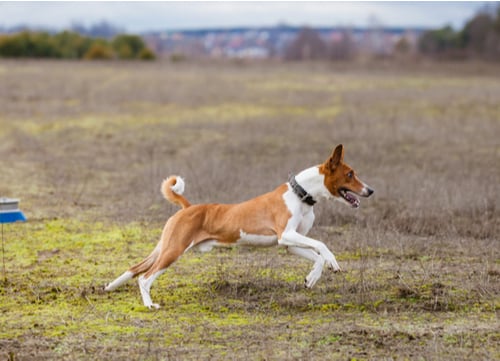
2. Basenji
Apartment dwellers love Basenjis because they groom themselves like cats, have no “doggy” odor, and don’t bark (they chortle or yodel instead).
Originating in ancient Egypt, where they were bred to hunt, the laidback, adaptable Basenji serves as a companion dog today. Their average lifespan is 13 to 14 years.
Basenjis does best with owners who can commit to agility, playtime, and enrichment activities with their high energy levels. This companion will help you keep healthy, too.
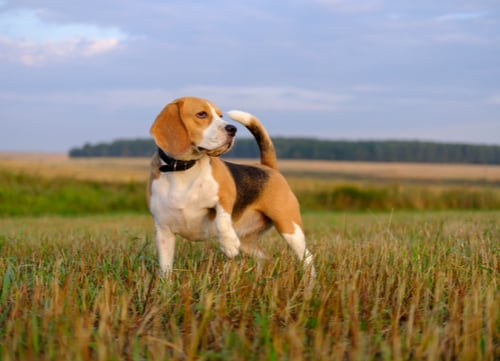
3. Beagle
People all over recognize this dog as Charles Schulz’s inspiration for Snoopy. President Lyndon B. Johnson also favored Beagles; he had three of this breed named “Him,” “Her,” and “Edgar.”
How far back in history the breed goes is unknown, but by the 1500s, the English used them in packs to track hares and rabbits.
Like the Basenji, this breed doesn’t have a “doggy” odor. They live on average for 10 to 15 years, making the beagle a longtime loyal companion.
Active, energetic dogs, beagles need at least an hour of exercise each day. They are happiest as part of a pack, whether human or canine.
4. Bichon Frise
Although these charming dogs started as French and European royalty companions, they became street and circus performers after the French Revolution. Their average lifespan is 14 to 15 years.
Their sparkling dark eyes, black nose, and mouth contrast with their bright white hypoallergenic coat.
The coat needs daily brushing to avoid matting, along with clipping every four to six weeks.
Adaptable and cheerful, their small size makes them ideal for smaller quarters. This breed gets along well with other dogs and children.
Bichon loves making new friends, and they want to be with their people, not left alone.
They are active in sporadic bursts and enjoy playtime with their owners. These dogs respond to training quickly, but some can be a challenge to housebreaking.
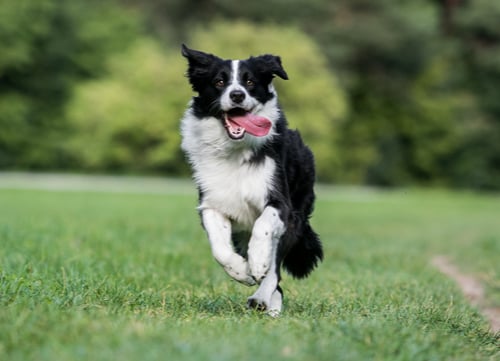
5. Border Collie
The Border Collie’s story is linked to a series of invasions in Britain, first by the Romans and then by the Vikings.
Roman and Viking herding dogs bred together, resulting in Border Collies, mid-sized, athletic, agile herders. Some believe Border Collies are the finest herding dogs in the world. Perhaps the breed’s most famous fan was Queen Victoria.
The lifespan of these dogs is 12 to 15 years, and they keep busy for all of it.
This breed needs daily exercise, much more than just a quick walk around the neighborhood. Border Collies love working, so agility, herding, or obedience activities will all help keep them happy and healthy.
6. Chihuahua
Chihuahua's history goes back to the twelfth century when the Aztecs conquered the Toltecs. The Aztecs bred their dogs with the Toltec dogs, resulting in the Chihuahua.
The name comes from Americans in the 1800s. They named this breed after the state of Chihuahua in Mexico, where they found many of these dogs.
The breed’s lifespan is 14 to 16 years.
Known as the smallest dogs in the world, their size makes them good pets for urbanites. Chihuahuas can generally get all the exercise they need by running and playing in a small space.
Short, slow walks will also keep them (and their owners) healthy.
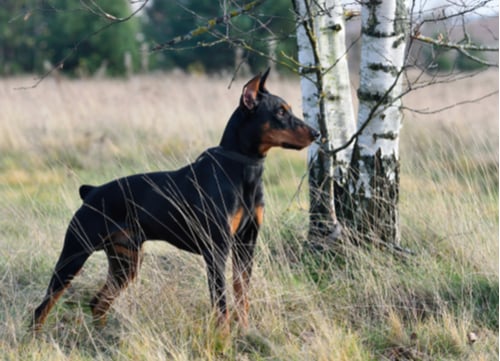
7. German Pinscher
One of Germany’s oldest dog breeds, the Pinscher, was bred to be a rat-slayer. Now, this streamlined and muscular dog is an all-around athlete in canine sports. This healthy breed has a lifespan of 12-14 years.
Active owners and lots of exercises are needed to help keep these canine companions physically and mentally healthy.
Extremely intelligent, they respond well to interesting, engaging training. Training and socialization are important since this breed has a reputation for mischief and willfulness.
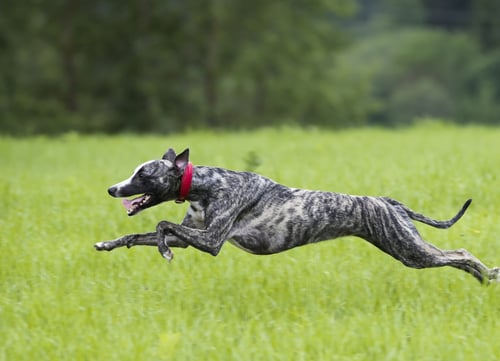
8. Greyhound
Graceful and lean, these sprinters are the fastest dog breed, running at speeds of up to 45 miles an hour. Since this breed has only rare hereditary health problems, they live longer than most other large dogs.
Their average lifespan is between 10 and 13 years.
Energetic in short spurts, Greyhounds need regular exercise and a safe, fenced place to run because sighthounds will take off after small animals.
Since they are so prey-driven, Greyhounds also love to chase tennis balls or coursing lures.

9. Manchester Terrier
The Manchester Terrier, named after an industrial city in northwestern England, was bred to hunt rabbits and kill rats. The breed comes in two versions (standard and toy), and both have a lifespan of 15 to 17 years.
Manchester Terriers need a couple of long walks a day to stay healthy. They form close bonds with their owners and enjoy chasing balls or engaging in some other vigorous play.
These dogs also excel in many dog sports—even freestyle dancing!
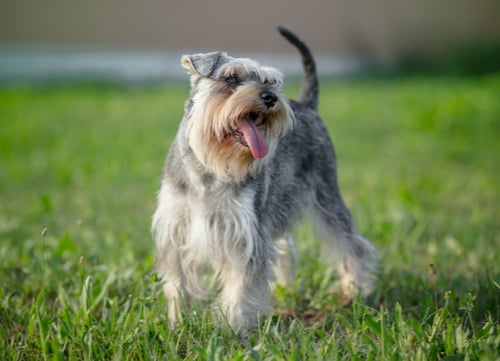
10. Miniature Schnauzer
Like the Manchester Terrier, Schnauzers were bred to kill rats in Germany rather than England. All-around useful dogs on a farm, people also found they made ideal companions because of their size and friendliness.
Schnauzers come in three sizes (standard, toy, and miniature). Miniature Schnauzers, in particular, appeal to people living in small quarters.
They make good watchdogs and don’t shed much. With few hereditary problems, this robust breed’s average lifespan is 12 to 15 years.
With a medium level of energy, they can happily live in cities or out in the country.
They need regular daily exercise: running in a fenced yard is ideal, and they enjoy activities and playtime with their owners.
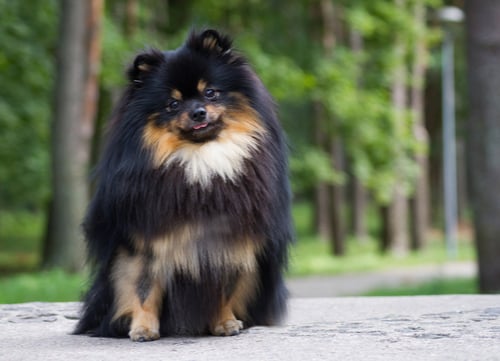
11. Pomeranian
Here’s another dog with a small body and a big personality. Bold and lively, these dogs make wonderful companions and watchdogs.
They bred Pomeranians down from larger spitz-type dogs in Pomerania, which Poland and West Germany now encompass.
The aim was to develop a smaller companion dog. Queen Victoria loved Pomeranians and helped to popularize the breed.
This breed is active, with a moderate amount of energy. Playing indoors with their people and taking short walks outdoors regularly will keep them healthy.
Owners must keep an “eagle eye” on the outside for two reasons: hawks, owls, and eagles can consider them prey, and curious Pomeranians are also notorious escape artists.
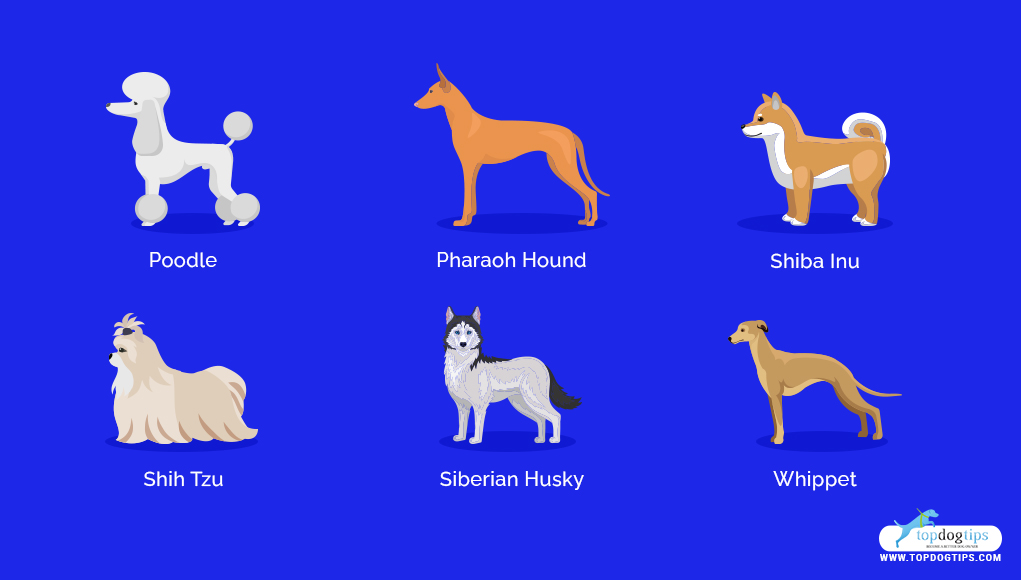
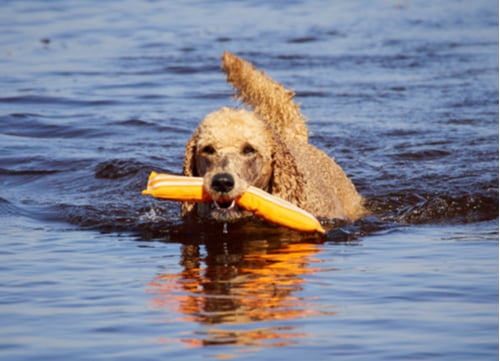
12. Poodle
Bred in Germany as a hunting dog more than 400 years ago, the Poodle’s job was to retrieve the ducks shot by hunters from the water.
Poodles are brilliant dogs, avid swimmers, and energetic retrievers. This dog breed sheds little, making them the perfect dog for people with allergies.
Poodles come in three sizes: miniature, toy, and standard, and every one of them is active. Their average lifespan is 10 to 18 years, which is long, particularly for a large breed.
Poodles require daily exercise, and staying busy keeps them healthy. They enjoy jogging, walks, and dog sports with their people.
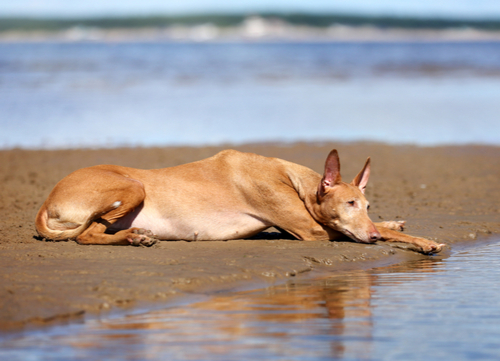
13. Pharaoh Hound
They bred this dog back in Ancient Egypt to pursue small game, making it one of the oldest domesticated dog breeds in history. People-oriented, Pharaoh Hounds form strong bonds and normally do well in houses with children.
Another plus with these elegant dogs is that they do not have a “doggy” odor. Their average lifespan is 12 to 14 years.
Pharaoh Hounds love to run; their top speed is about 35 miles per hour.
Extremely energetic, they need daily exercise. Running 15 to 20 minutes twice a day in a safe, fenced area or walking twice a day for 20 minutes each should be enough to keep them healthy.
These sighthounds cannot ever be off-leash in an open area. If they speed off in pursuit of prey, they will not come back.
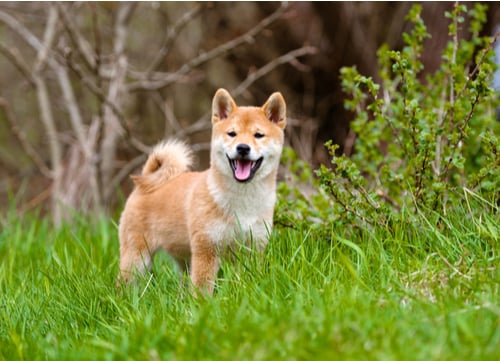
14. Shiba Inu
Around 300 B.C., the Japanese began developing this breed to hunt game in the mountains.
The Shiba Inu is Japan’s smallest and oldest dog bread. Today, the Shiba Inu is the most popular companion dog in Japan, and its popularity continues to grow in the United States.
Because of their trim build and clever eyes, some think they resemble foxes. This breed is a heavy shedder, but on the plus side, it is quick to housebreak.
The average life span is 13 to 16 years.
The Shiba Inu needs regular exercise, enjoying walks, or running around a fenced yard.
Like the Pharaoh Hound, this breed will take off after small animals, so you must keep it on a leash in open areas.
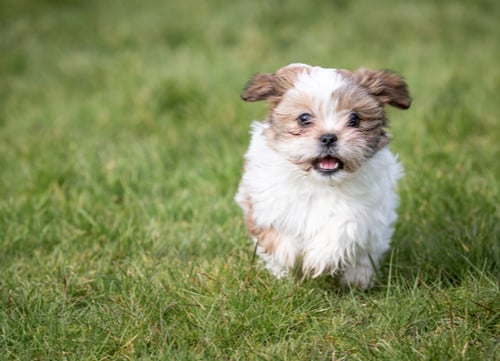
15. Shih Tzu
Shih Tzu means “lion dog” in Chinese, and this little dog with its lion-like mane packs a lot of charm in a small bundle.
Bred centuries ago to serve as companions for Chinese emperors, these dogs are known for their affectionate, playful nature.
Shih Tzus is particularly fond of children. The average lifespan is 10 to 18 years.
Bred to be a companion, Shih Tzus don’t require a lot of exercise. Short walks and playtime inside are enough to keep this dog healthy.
16. Siberian Husky
In northeastern Asia, the indigenous Chukchi people developed this breed to work in packs, pulling loads over frozen terrain. The average Siberian Husky lives 12 to 14 years.
As pack dogs, they enjoy being part of a family and get along well with other dogs. With their endless energy and muscular build, these athletic dogs need many exercises, around three to five miles worth of activity every few days.
They enjoy doing activities like hiking, walking, or jogging with their people, which helps to create strong bonds. Like so many dogs on this list, they should never be allowed to run off-leash in an open area.
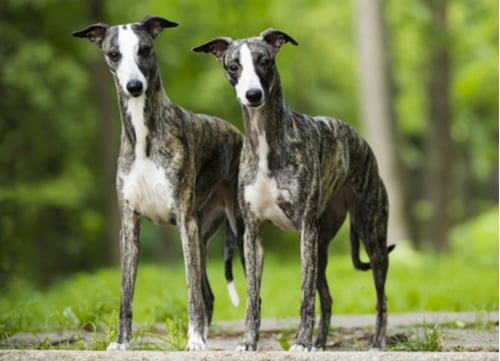
17. Whippet
Coal miners in Victorian England enjoyed rabbit hunting and dog racing, but they couldn’t afford to feed and house large breeds like greyhounds.
Their solution was to breed a smaller version of the greyhound: the whippet. Today, whippets are generally companion dogs. Calm and affectionate, these dogs adapt easily to life in a small house or apartment as long as they get enough exercise.
A bonus for the apartment dweller, whippets don’t often bark. This healthy, low-maintenance dog, on average, lives 12 to 15 years.
These dogs have two speeds: couch potato and blur. During their sporadic bursts of energy, whippets can run up to 35 miles an hour.
Fenced-in yards where they can safely run or dog sports like agility and lure-coursing will help these elegant dogs stay healthy so they can spend more time relaxing at home with their people.
Conclusion
Whether you’re looking for a fellow couch potato to lounge on your lap or a working dog to put you through your paces, you’ll find a devoted companion among these breeds.
With any luck, one of these robust dogs will grace your life for a long time.


